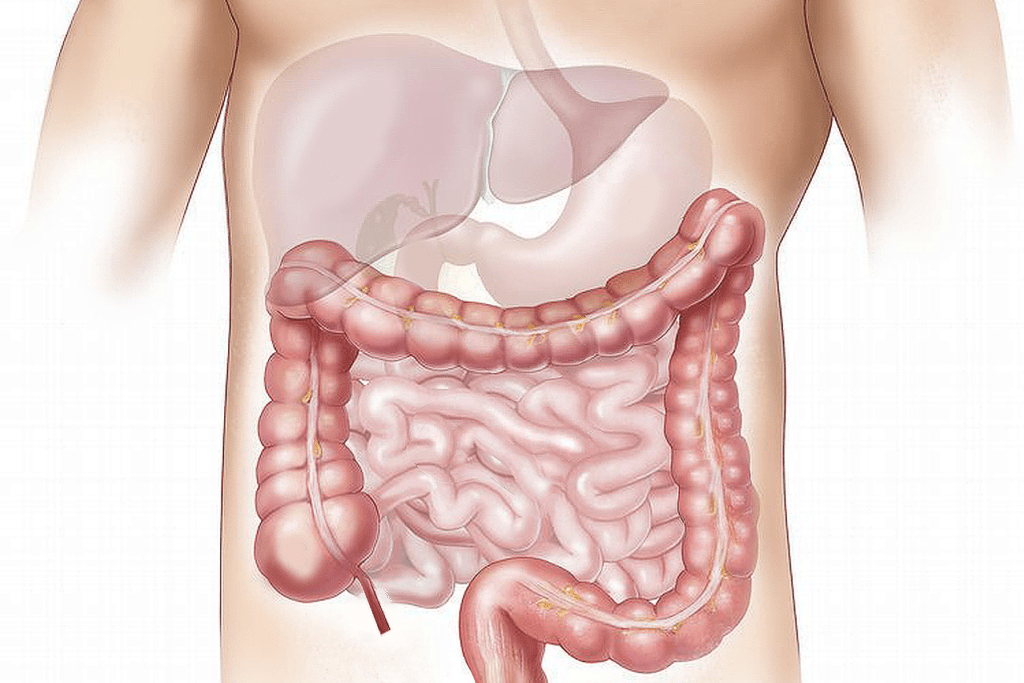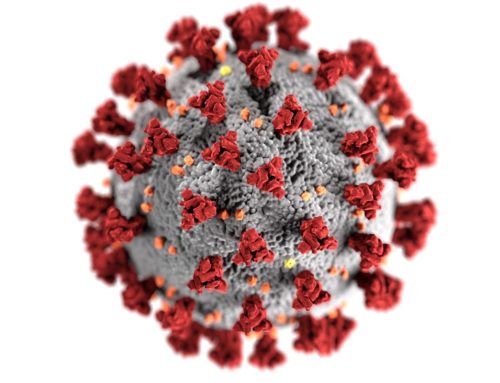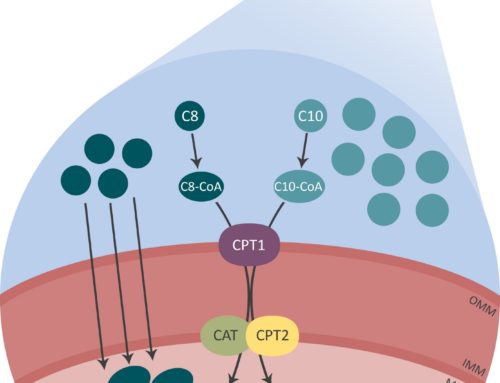MCT Therapeutic:
MCT-OIL, medium-chain triglycerides, is a source of fat for people who are unable to digest or absorb conventional fats. MCTs do not require digestive enzymes or bile acids for digestion and absorption.
MCT therapeutic nutritional applications:
- In case of reduced pancreatic lipase, reduced bile salts
- In case of defective absorption of mucous membrane fat (reduced mucosal permeability, reduced absorbing surface)
- In case of defective lymphatic transport of fat (i.e. intestinal lymphatic obstruction)
- In case of severe malabsorption
MCT main benefits:
- For patients who cannot digest or absorb conventional fats
- MCTs are more easily hydrolysed and absorbed than long-chain fats
- MCTs are absorbed directly into the portal circulation and do not require bile salts for emulsification.

How are long-chain fatty acids metabolised? Long-chain fatty acids slow down digestion.
Long-chain fatty acids (LCFA) slow down digestion because they stay in the stomach longer. They need bile acids or bile salts to be dissolved. The bile salts turn large fat droplets into small fat droplets in an aqueous paste. Only when they are made small enough and have more contact area, does the proper digestion of long-chain fatty acids continue. Lack of bile acids causes absorption problems with long-chain fatty acids. People with hepatitis, insufficiently functioning pancreas, jaundice and cystic fibrosis are affected by this.
When consumed, LCFAs are broken down by a special enzyme called pancreatic lipase. They are then converted into small packets or spheres of fat called chylomicrons. These chylomicrons are absorbed by the small intestine and travel through the lymphatic system and bloodstream. In animals and humans, chylomicron uptake increases serum triglycerides for 3-10 hours immediately after a meal. Once in the liver, the fats are further broken down by bile acids. They then either undergo beta-oxidation, biosynthesis to cholesterol, or are repackaged as triglycerides.
The triglycerides and cholesterol are then released back into the bloodstream and transported to various other organs in the body. As we said earlier, the way in which LCFAs are processed can place a heavy burden on the body. In addition, the resulting increase in lipid levels in the blood can contribute to atherogenesis, a process by which fat deposits form in the arteries and gradually narrow them.

How are medium-chain fatty acids metabolised?
Medium-chain fatty acids (MCFA) are processed by the body in a completely different way. According to Dr. C. Day-rit, MCTs are absorbed 4 times better than long-chain fatty acids. Firstly, they are absorbed by the small intestine without the need for pancreatic lipase for digestion. MCFAs then travel through the portal vein directly to the liver, rather than through the blood or lymphatic system. This means that they are not stored in fatty tissue. The liver then metabolises the MCFAs without the need for bile acids and releases them as energy.
MCTs go through the portal vein; LCTs do not do that.
The portal vein connects the stomach, small intestine and colon to the liver. All digested nutrients (with the exception of LCTs) that enter the blood from the digestive system are first transported to the liver via the portal vein. The absorbed nutrients only enter the blood circulation through the hepatic artery.
Thanks to the way MCFAs (or MCTs) are metabolised, they do not increase blood lipid levels or contribute to atherogenesis. In fact, MCFAs are responsible for a wide range of health benefits. Because of the unique way in which MCTs are digested and metabolised, they produce an increase in energy and stimulate metabolism. For this reason, MCTs are used by athletes to improve performance.
MCTs get into our cells without the transport protein carnitine. Oxidation to ketones, CO2 delivers energy as fast as that of sugars. The unused MCTs (which have not been metabolised) go back to the liver. This provides the body with extra energy instead of direct fat storage. As a result, MCTs provide immediate energy, like sugars and also for longer-lasting energy like sugars.
MCTs or coconut oil are often found in commercially produced energy bars and sports drinks marketed for people with active lifestyles. The nutritional and medical benefits of MCFAs have been recognised for more than 60 years. MCTs have been added to feeding tube feeds and hospital intravenous emulsions for decades. All infant formulae and hospital infant formulae contain either coconut oil or MCTs. MCFAs have been used since the 1970s to treat patients with digestive problems and pancreatic insufficiency. The most common non-medicated treatment for epilepsy uses an MCT-based ketogenic diet.











